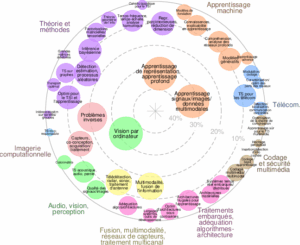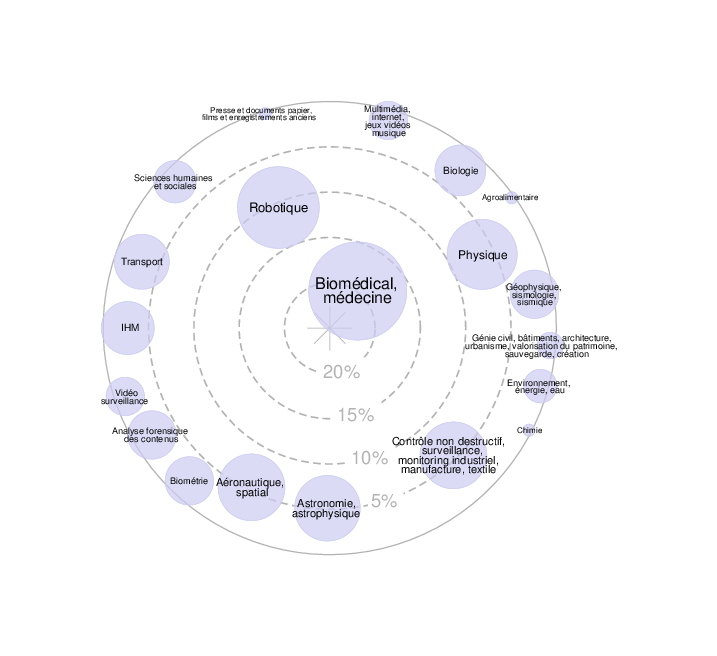Topic: Information Theory – strong coordination and strategic communication in the finite-length regime
Description
Since the next generation of wireless networks comprehends a unified network of connected objects, it is vital to ensure the cooperation and coordination of the constituent devices. While communication networks have traditionally been designed with the purpose of reliably conveying information, the devices can be viewed as autonomous decision makers which exploit communication as a way to enforce a prescribed behavior. In this scenario, the information transmission is affected by at least two kind of constraints. First, the encoder andthe decoder of a given signal may have nonaligned incentives, in which case the encoder might be unwilling totransmit truthful information. Second, communication between agents is often imperfect, the encoder signal is degraded by ambient noise. By building on recent advances in Information Theory on strong coordination in [1], on finite-length regime [2], and in Game Theory on strategic communication in [3], we will develop a general framework for the strong coordination of the actions of strategic agents in the finite-lenght regime. New characterization of information-theoretic bounds are expected, by using the techniques employed in [4], where the fixed-length regime will betackled following the approach of [5, 6].
Organisation
This Post-Doc will take place at IRISA UMR 6074 in ERMINE team, Campus de Beaulieu, 263 Boulevarddu Général Leclerc, 35000 Rennes, France, with regular scientific visits at IMT Nord-Europe, via GuglielmoMarconi, 59650 Villeneuve-d’Ascq (Lille), France, and with possibly scientific visits to Georgia Tech Atlanta andKTH Stockholm.
Background
Applicants should have a strong background in mathematics, either in the theoretical aspects of telecommu-nications, or in game theory. Applicants must have a PhD degree. A good and working knowledge of the EnglishLanguage is required.How to apply:Interested candidates have to send their detailed CV, academic records (from Bsc to PhD level), at least twoacademic referees and a short motivation letter via email to the contacts below.
References:
[1] G. Cervia, L. Luzzi, M. Le Treust, and M. R. Bloch, “Strong coordination of signals and actions over noisy channelswith two-sided state information,” IEEE Transactions on Information Theory, vol. 66, no. 8, pp. 4681–4708, 2020.
[2] G. Cervia, T. Oechtering, and M. Skoglund, “(ǫ, n) fixed-length strong coordination capacity,” in Proc. of IEEEInformation Theory Workshop (ITW), 2021.
[3] M. Le Treust and T. Tomala, “Persuasion with limited communication capacity,” Journal of Economic Theory, vol.184, p. 104940, 2019.
[4] M. H. Yassaee, M. R. Aref, and A. Gohari, “Achievability Proof via Output Statistics of Random Binning,” IEEETrans. Inf. Theory, vol. 60, no. 11, pp. 6760–6786, Nov. 2014.
[5] Y. Polyanskiy, H. V. Poor, and S. Verd´u, “Channel coding rate in the finite blocklength regime,” IEEE Transactionson Information Theory, vol. 56, no. 5, p. 2307, 2010.
[6] V. Kostina and S. Verd´u, “Lossy joint source-channel coding in the finite blocklength regime,” IEEE Transactions onInformation Theory, vol. 59, no. 5, pp. 2545–2575, 2013.
Contact: Giulia Cervia (giulia.cervia@imt-nord-europe.fr) & Maël Le Treust (mael.le-treust@cnrs.fr)
https://sites.google.com/view/giuliacervia/home-page
https://sites.google.com/site/maelletreust/





